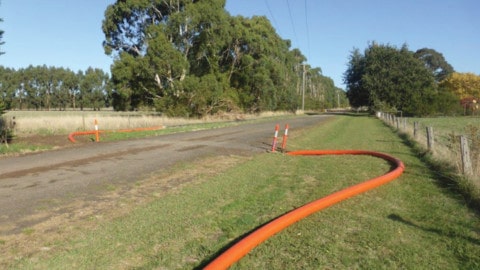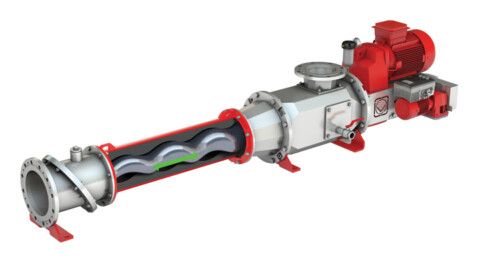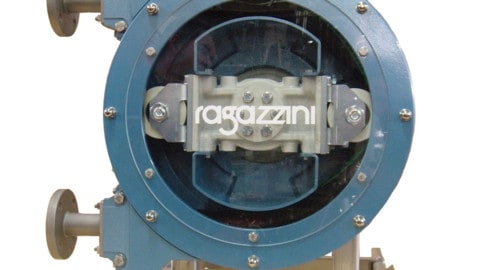by Tim Shea, Senior Analyst, ARC Advisory Group
Increasing energy costs over the last few decades have put more pressure on companies across all industries to find more efficient ways to utilise energy. Reducing energy consumption reduces both input costs and carbon dioxide emissions for industrial organisations. The need to increase efficiency contributes to the gradual shift to consider total lifecycle costs, rather than just initial purchase and installation costs. Here, the energy consumption of an asset – whether or not it’s actually in use represents a significant component.
Modern pumping systems feature drives and sensors which allow them to operate at maximum efficiency.
Unfortunately, purchasers of industrial pumps have been slow to embrace this lifecycle cost approach and, instead, often still base their decisions on antiquated techniques that result in significant wasted energy.
ARC Advisory Group research indicates that, by implementing modern intelligent pump systems, industrial plants could realise significant energy savings, while reducing their carbon footprint.
Industrial pumps major contributors to energy use
According to the US Department of Energy, industrial pumps consume between 25 and 50 per cent of the total energy used by electric motors in industrial applications. This represents a huge expense to users; one that will only increase as energy costs trend upwards.
Expenditures on energy are one of the largest cost contributors to most industrial processes and plants.
By increasing the efficiency of a pump, industrial producers have the opportunity to cut their own costs while at the same time making their products appear more favourable in the eyes of consumers who increasingly enter a company’s carbon footprint into their purchasing decisions.
Many governments have established new regulations and incentives for energy and emissions limits in industrial plants.
For example, the US has implemented an “Advanced Energy Manufacturing Tax Credit,” and the European Union has instituted “Cap and Trade” emissions programs as well as setting a goal to cut CO2 emissions by 20 per cent relative to 1990 levels.
Improved pump efficiency = reduced costs
From a lifecycle cost perspective, the purchase cost of a pump system represents just 10 per cent of the entire cost. According to the US Department of Energy, after the initial purchase of the pump, the remaining cost breakdown is seven per cent for installation, five per cent environmental costs, three per cent for costs associated with the pump when not in use, 10 per cent operating costs, 25 per cent maintenance, and 40 per cent for energy.
The data clearly reflects the huge costs-saving potential from implementing energy-saving intelligent pumps in place of conventional pumps.

The water industry has seen considerable benefits from the introduction of intelligent pumping systems.
Intelligent pumps designed to improve efficiency
Today’s pump suppliers offer an array of features designed to improve energy efficiency. These include the addition of variable frequency drives (VFD), enabling pump speeds to closely match the actual flow demanded at a specific time.
This means a pump can be ramped up at times of high demand and pulled back when lower flow rates are needed. This saves energy and keeps pumps from working harder than they need to, extending pump life.
Many pumps now also come with embedded sensors that detect flow rate and can automatically vary the speed of a drive to maintain required flow rates and pressure. This capability further improves the efficiency of a pumping system, decreasing the amount of energy required to meet pumping demands.
Based on physics-based affinity laws, reducing pump speed by just 10 per cent (resulting in a minor reduction in flow rates) will reduce energy consumption by approximately 25 per cent.
Another possible use of this technology is to link two smaller pumps, with one used to meet the demands of the lower flow rates and the second pump kicking in to boost pump capacity as required. This approach is ideal for a plant that only occasionally requires above-average flow rates.
Experts estimate that a system that automatically adjusts speed to match the required flow rates can reduce the overall energy consumed by a pump by up to 50 per cent. Referring back to the lifecycle cost breakdown provided earlier in this report, we see that this can reduce total lifecycle costs by up to 20 per cent, or twice the initial cost of the pump.
Pump users slow to adopt intelligent systems
Despite the potential cost and energy savings, many industrial end users have been slow to adopt the new technologies. Most users still use the antiquated approach of selecting a pump that can meet the highest rate that will be demanded, resulting in a huge amount of unnecessary energy waste over the lifetime of the pump.
ARC believes this resistance to implementing intelligent pumps is based partly on cultural resistance and partly on the slightly higher initial cost. However, in most applications, the slightly higher upfront costs of intelligent pumps are more than offset by the overall savings in lifetime costs.
At this point, ARC research indicates that intelligent pumps are beginning to gain wider popularity in at least two industrial sectors: building HVAC, and municipal water and wastewater. The demand in buildings stems from certifications and standards.
Today’s building designers strive for “green” buildings with the smallest possible carbon footprints. For many in the US, LEED certification is a key objective. And, of course, the reduced HVAC-related operating costs offered by intelligent pumps appeal to building owners and managers. In the municipal water and wastewater industry, pumps often represent the single largest cost factor.
Traditionally, municipalities install fixed-speed pumps designed to handle peak demand. As a result, at times of less-than- peak demand, these pumps continue to run at the same high rate, resulting in excessive energy use and a huge buildup of pressure in the piping systems.
This often causes cracking and rupturing of the infrastructure, resulting in a massive amount of water being lost. In some cities, up to 50 per cent of water put into the system is eventually lost.
So, in addition to higher-than-required energy costs, use of non-intelligent pumps contributes (directly or indirectly) to increased infrastructure costs and lost revenue for the municipality. As consumers, administrators, and politicians become more aware of the need for increased efficiency, municipalities have increased their use of intelligent pumping systems.
Aside from the energy-saving benefits, intelligent pumping systems also provide the ability for users to remotely monitor the health of the pump. Embedded sensors can measure leakage, vibrations, overheating, clogs, etc and alert users to an issue long before the pump actually breaks to support predictive maintenance strategies and reduce unplanned downtime.
Recommendations
Certainly, the specific energy savings realised from adopting an intelligent pump system can vary greatly depending on the application and facility. In existing facilities, an energy audit of the current pumping systems can provide a helpful data point for evaluating the total lifecycle cost savings that upgrading to intelligent pump systems could produce.
Assuming that these cost savings outweigh the cost of implementing the new system, it should be relatively simple to build a business case for the upgrade.
Looking ahead, rising energy prices, the need to meet new energy and emissions standards, and increasing demand by consumers for more environmentally friendly products are likely to further increase future adoption across a broader range of industries.
When considering an intelligent pump system it is important to:
- Evaluate current energy use
- Evaluate the total lifecycle cost of current pumps compared to a new intelligent system
- Carefully match the pump system to the application requirements and consider installing booster pumps to meet infrequent peak flow requirements
For more information or to provide feedback, please visit www.arcweb.com to contact ARC Advisory Group.


















